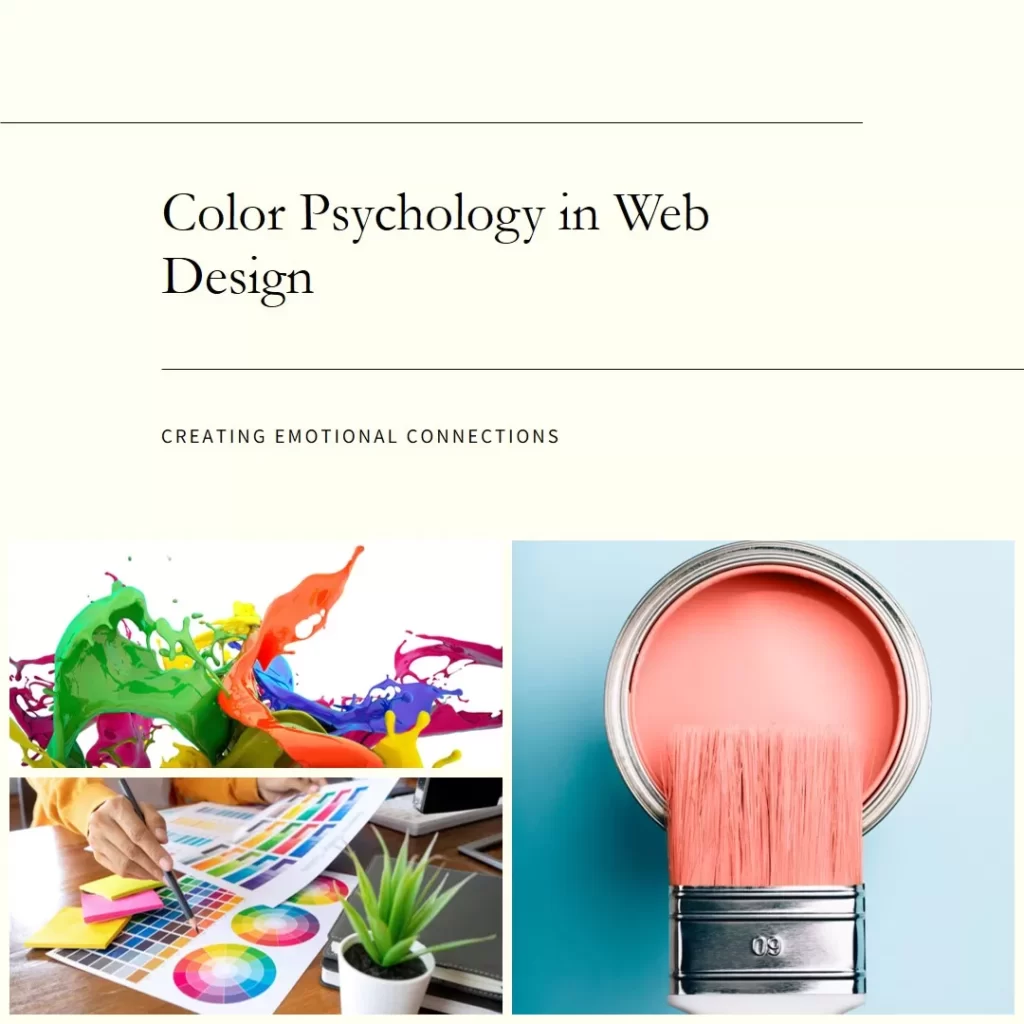Color Psychology in Web Design
Creating Emotional Connections The influence of Colors on Emotions: Colors have the remarkable ability to evoke specific emotions and trigger psychological responses. Different hues can create a wide range of feelings, from calm and tranquility to excitement and urgency. Let’s explore some commonly associated emotions with specific colors: Red: Passion, energy, and urgency. Red is attention-grabbing and can stimulate appetite, making it suitable for food-related websites or calls to action. Blue: Trust, calmness, and professionalism. Blue is often used by financial institutions and corporate websites to create a sense of security and reliability. Yellow: Happiness, optimism, and warmth. Yellow is a vibrant and cheerful color that can be used to grab attention or add a positive touch to a design. Green: Harmony, growth, and health. Green is often associated with nature and can be used to create a sense of balance and relaxation, making it ideal for environmental or wellness websites. Purple: Royalty, creativity, and spirituality. Purple can convey a sense of luxury and sophistication, making it a popular choice for beauty or artistic brands. Orange: Enthusiasm, vitality, and friendliness. Orange is an energetic color that can evoke a feeling of excitement and warmth, making it suitable for entertainment or social platforms. Choosing the Right Color Palette: When selecting a color palette for your website, it’s crucial to consider your brand’s personality, target audience, and the message you want to convey. Here are some tips to help you choose the perfect color scheme: Go-To Color Schemes: While there’s no one-size-fits-all approach to color schemes, here are a few popular combinations that can serve as a starting point: Classic and Elegant: Navy blue, gold, and white. This combination exudes sophistication and timelessness, perfect for luxury brands or formal websites. Vibrant and playful: Yellow, orange, and turquoise. This energetic palette can add a sense of fun and excitement, suitable for youthful and creative brands. Fresh and calming: Mint green, pastel blue, and white. This soothing combination creates a serene and tranquil atmosphere, ideal for wellness or nature-inspired websites. Modern and Minimalistic: Black, white, and a pop of vibrant color. This combination embraces simplicity and elegance, with a bold accent color to create visual interest and emphasis. Professional and trustworthy: Shades of blue and gray. This palette conveys professionalism, reliability, and trust. It is commonly used by corporate and financial institutions. Earthy and natural: Shades of green, brown, and beige. This color scheme connects with nature, sustainability, and eco-friendly brands. It evokes a sense of harmony and balance. Remember, these are just starting points, and you should adapt them to suit your brand’s unique personality and goals. Experimenting with color combinations and gathering user feedback can help you refine your choices and find the perfect palette. Creating Emotional Connections: When implemented strategically, colors can establish emotional connections with your website visitors. By aligning your color choices with the desired emotions and brand message, you can elicit specific responses and engage users on a deeper level. Here are a few techniques to strengthen emotional connections through colors: Color psychology is a vital aspect of web design, as it helps establish emotional connections with users. By comprehending the emotions linked to various colors and carefully selecting suitable color palettes, you can effectively express your brand’s personality and engage your audience on a profound level. Embrace experimentation and iteration, allowing colors to become your ally in crafting a memorable and impactful online presence!

